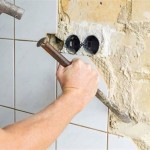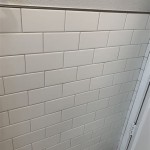Can I Put Vinyl Flooring Over Tiles With Underfloor Heating System?
Vinyl flooring is a popular choice for homeowners due to its durability, affordability, and ease of installation. It is also a good option for homes with underfloor heating systems, as it is compatible with most types of underfloor heating. However, there are a few things to consider before installing vinyl flooring over tiles with underfloor heating.
### CompatibilityThe first thing to consider is whether your vinyl flooring is compatible with your underfloor heating system. Not all types of vinyl flooring are suitable for use with underfloor heating, so it is important to check with the manufacturer before you purchase.
### TemperatureAnother important consideration is the temperature of the underfloor heating system. Vinyl flooring can withstand temperatures up to 27°C (80°F), but it is important to avoid exposing it to higher temperatures, as this can damage the flooring.
### Expansion and ContractionVinyl flooring expands and contracts with changes in temperature. This means that it is important to leave a small gap around the edges of the room to allow for expansion. If the flooring is not allowed to expand, it can buckle and crack.
### InstallationInstalling vinyl flooring over tiles with underfloor heating is a relatively simple process. However, it is important to follow the manufacturer's instructions carefully to ensure a successful installation.
### Here are the steps involved in installing vinyl flooring over tiles with underfloor heating: 1.Prepare the subfloor.
The subfloor must be clean, level, and dry. Any cracks or holes in the subfloor should be repaired. 2.Install the underlayment.
The underlayment will help to cushion the vinyl flooring and prevent it from moving. 3.Install the vinyl flooring.
The vinyl flooring should be installed according to the manufacturer's instructions. 4.Seal the edges.
The edges of the vinyl flooring should be sealed with a sealant to prevent moisture from getting underneath the flooring. ### MaintenanceVinyl flooring is easy to maintain. It can be cleaned with a damp mop and a mild detergent. It is important to avoid using harsh chemicals or abrasive cleaners, as these can damage the flooring.
### ConclusionVinyl flooring is a good option for homes with underfloor heating systems. However, it is important to consider the compatibility, temperature, expansion and contraction, installation, and maintenance of the flooring before you purchase.

Luxury Vinyl Tiles Fitted Over Underfloor Heating Cheadle Floors Floor Layer Manchester

How To Install Radiant Floor Heating Under Luxury Vinyl Tile

Heated Vinyl Plank Flooring Everything You Need To Know

Guide For Installing Radiant Floor Heating Under Vinyl Tiles

Luxury Vinyl Tiles Fitted Over Underfloor Heating Cheadle Floors Floor Layer Manchester

Installation Electric Underfloor Heating Mats Under Tiles Karndean Amtico

Retrofit Underfloor Heating The Best Guide Trade Supplies Blog

Can I Use Floor Heating Under Vinyl Warmup

Heated Vinyl Plank Flooring Everything You Need To Know
Guide To Choosing The Best Flooring For Underfloor Heating Nu Heat
Related Posts








